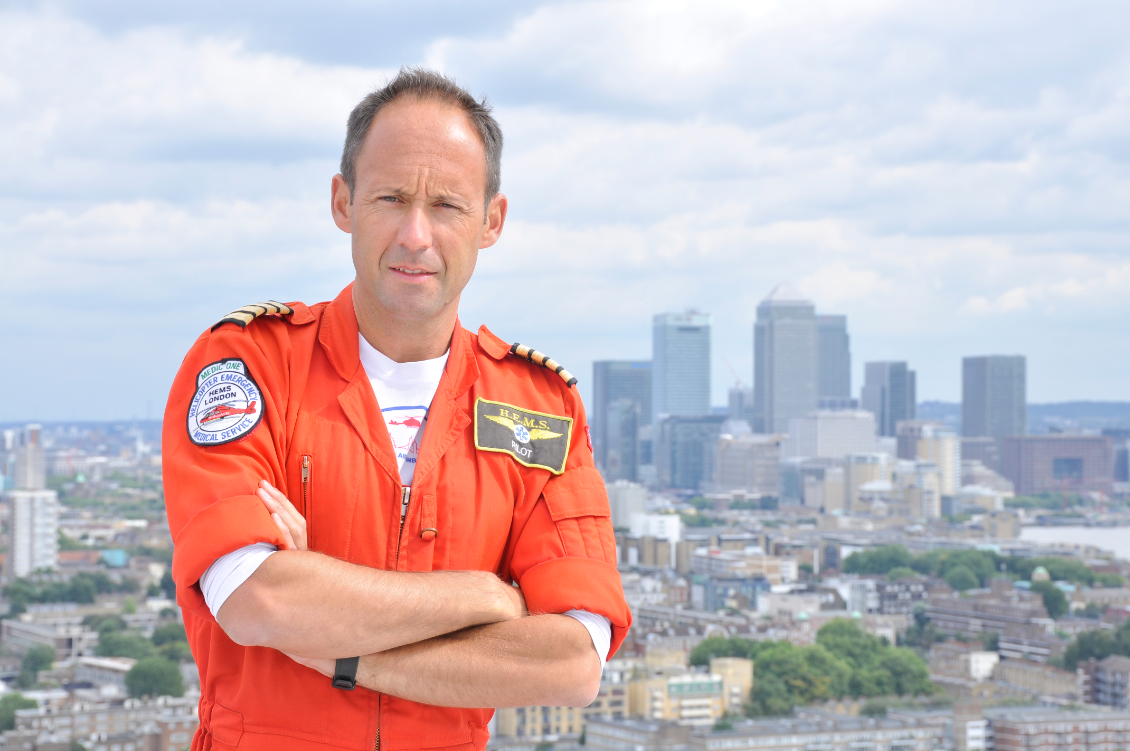60 seconds with...Captain Neil Jeffers

What is your role with London’s Air Ambulance?
I have been a Pilot with the service for 12 years now and I’ve been lucky, and privileged enough to take the role of Chief Pilot for the last four years. When I am on duty we can’t leave the helipad unless we are on a mission, so I use the time to catch up on paperwork and catch up with other members of the ops team and our charity staff. We are often lucky enough to host some really interesting visitors as well, and introduce them to the service – including welcoming staff from the hospital and Trust which is great.
What’s been your most memorable day, flying for the service?
Well every day is different which is one of the amazing things about what we do. For example we could be sitting now here chatting and in within ten minutes can be somewhere else on the ground next to a patient, helping people at the worst ever time of their lives.
I think the days that do stand out are the days where you’re super busy and certainly there was a day on the old Royal London Hospital helipad, when I was a recently qualified captain where I literally didn’t get out of the aircraft the whole day, We had, I think, nine jobs in a day with two medical teams on the ground, flat out helping as many people as we could.
What do you see as the unique challenges of operating an air ambulance in a city such as London?
It is certainly different from flying with other air ambulances. First of all we’ve got a lot of air traffic. We’ve got people going into Heathrow and City Airport, many helicopters which includes police and other air ambulances, filming helicopters etc. so it’s a really busy bit of air space. We are limited with how high we go because of air traffic above us, so we might fly at 1,000 feet but now we’ve got the buildings from below to contend with, some of which, in the case of the Shard, can be 1,023 feet high. So we have to go around. I think the biggest constraint is if we did have a problem with the aircraft there are few places to land in an emergency. Cranes, drones, buildings also make London extremely complicated.
The final thing to say I think, is that the landing sites in an urban environment are often small and contain loose articles that might get blown up and around the aircraft as we throw down three tonnes of air a second, stuff does get lifted up and that can be a threat. Also we usually land in busy areas where people and debris are also considerations and concerns for us in these built up areas.
What is your proudest moment as chief pilot of London’s Air Ambulance?
Accepting a cheque from the Freemasons for £1million towards the cost of our second helicopter was incredible. The venue at Freemasons’ Hall was very special, but also it was such a generous amount that has made such a difference to our operations. Now we don’t have to worry about maintenance because there is always a spare aircraft when needed. Beforehand we lost lots of flying days because we had no back up. Now we are confident that, as long as the weather is ok, we can be guaranteed to be able to fly to anyone that needs us.
